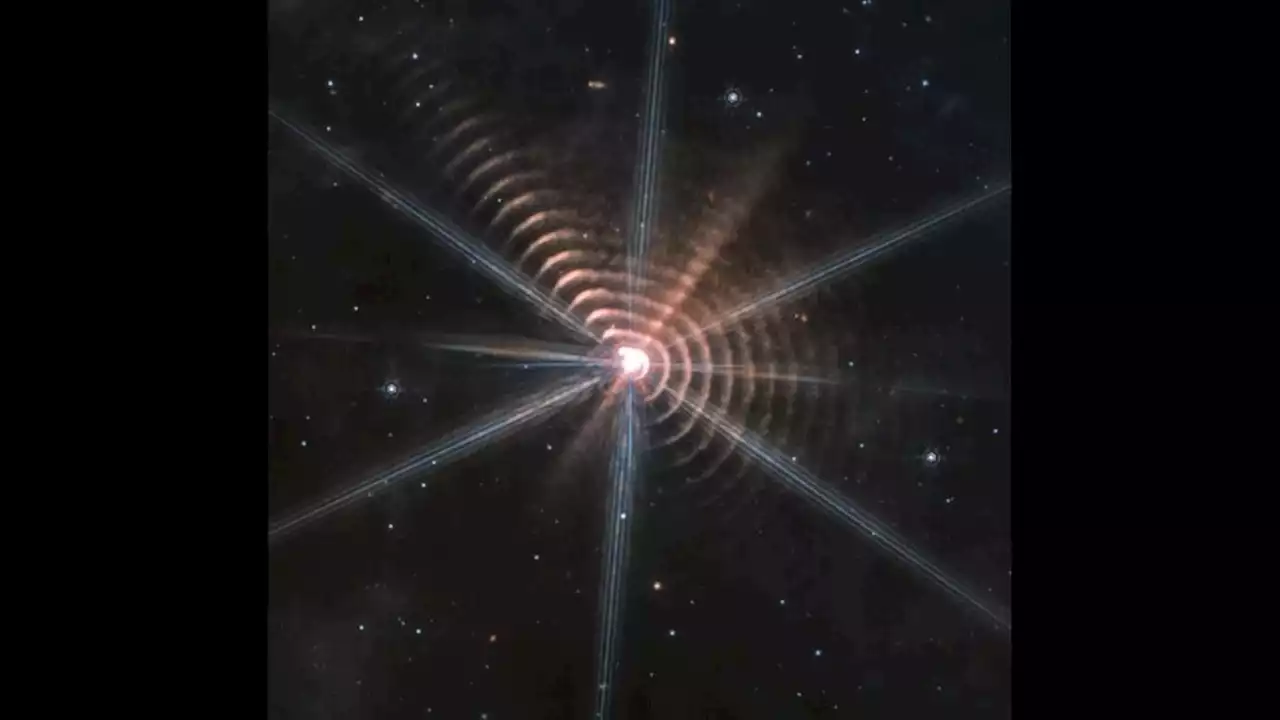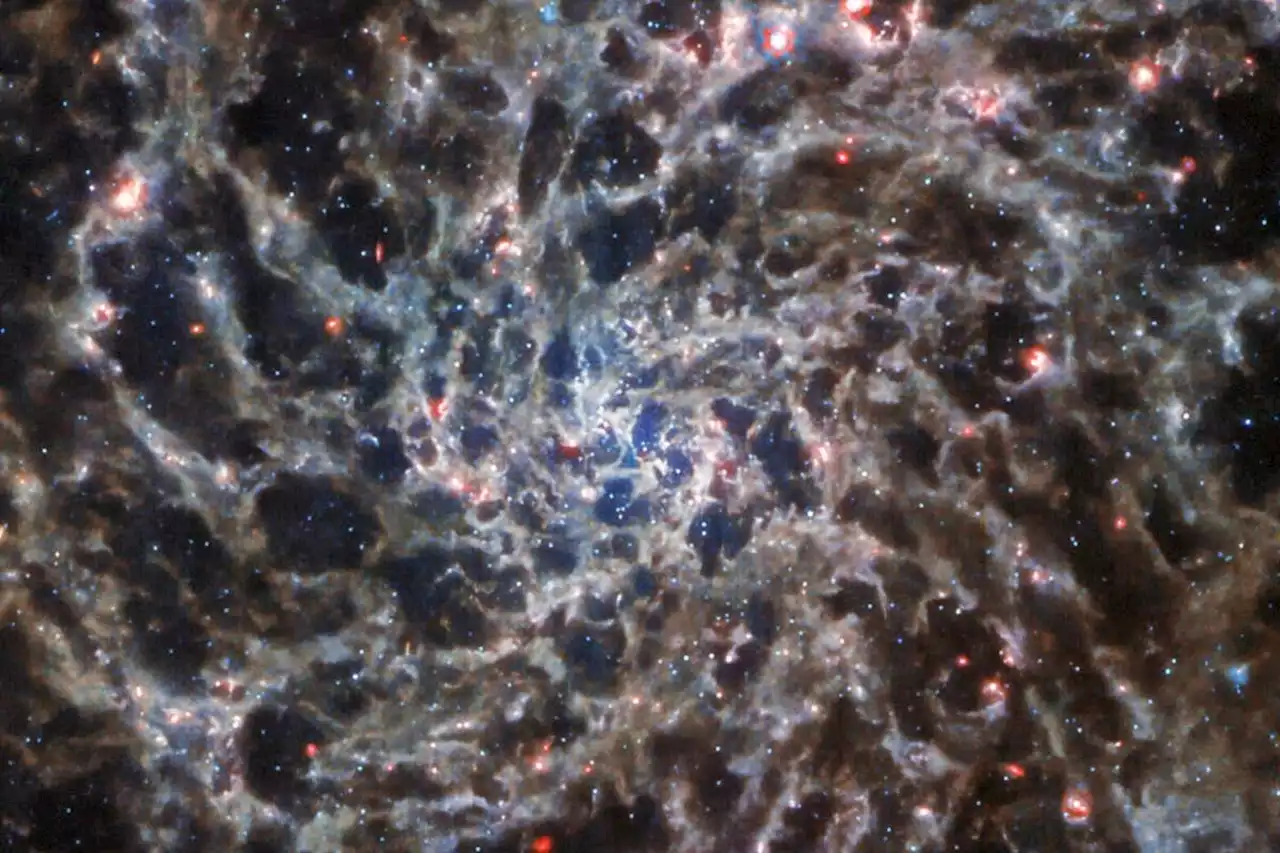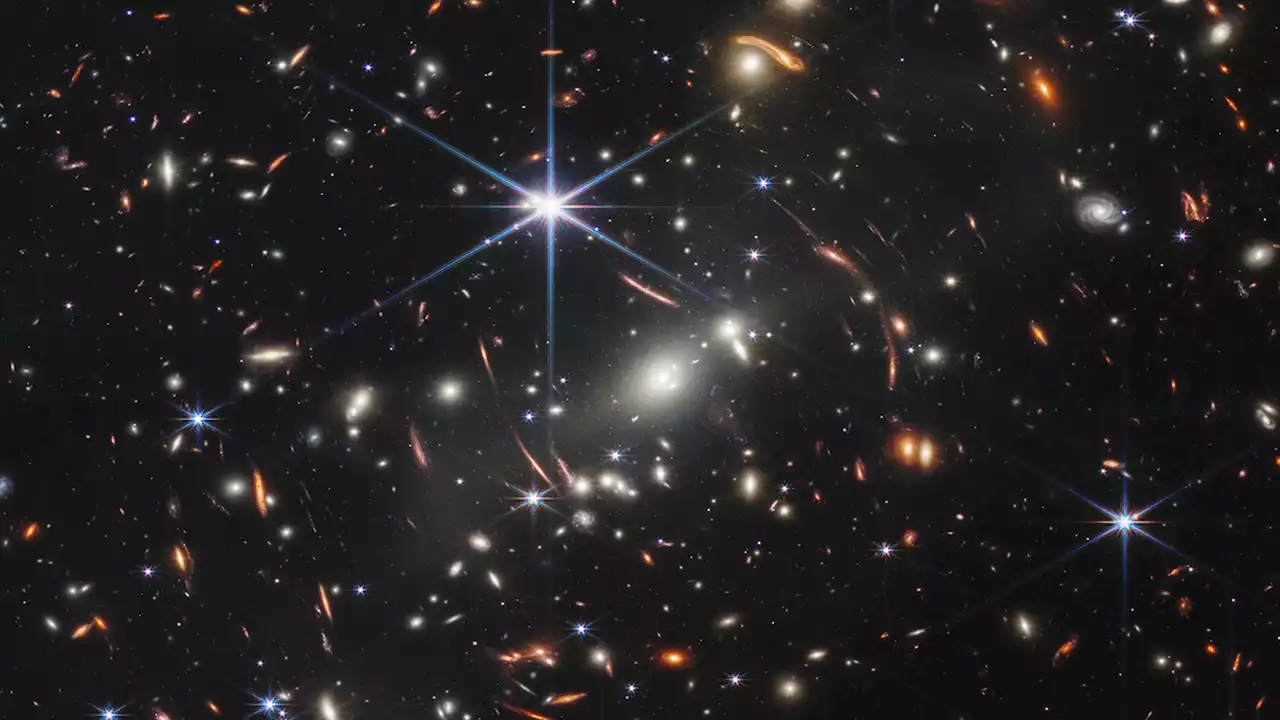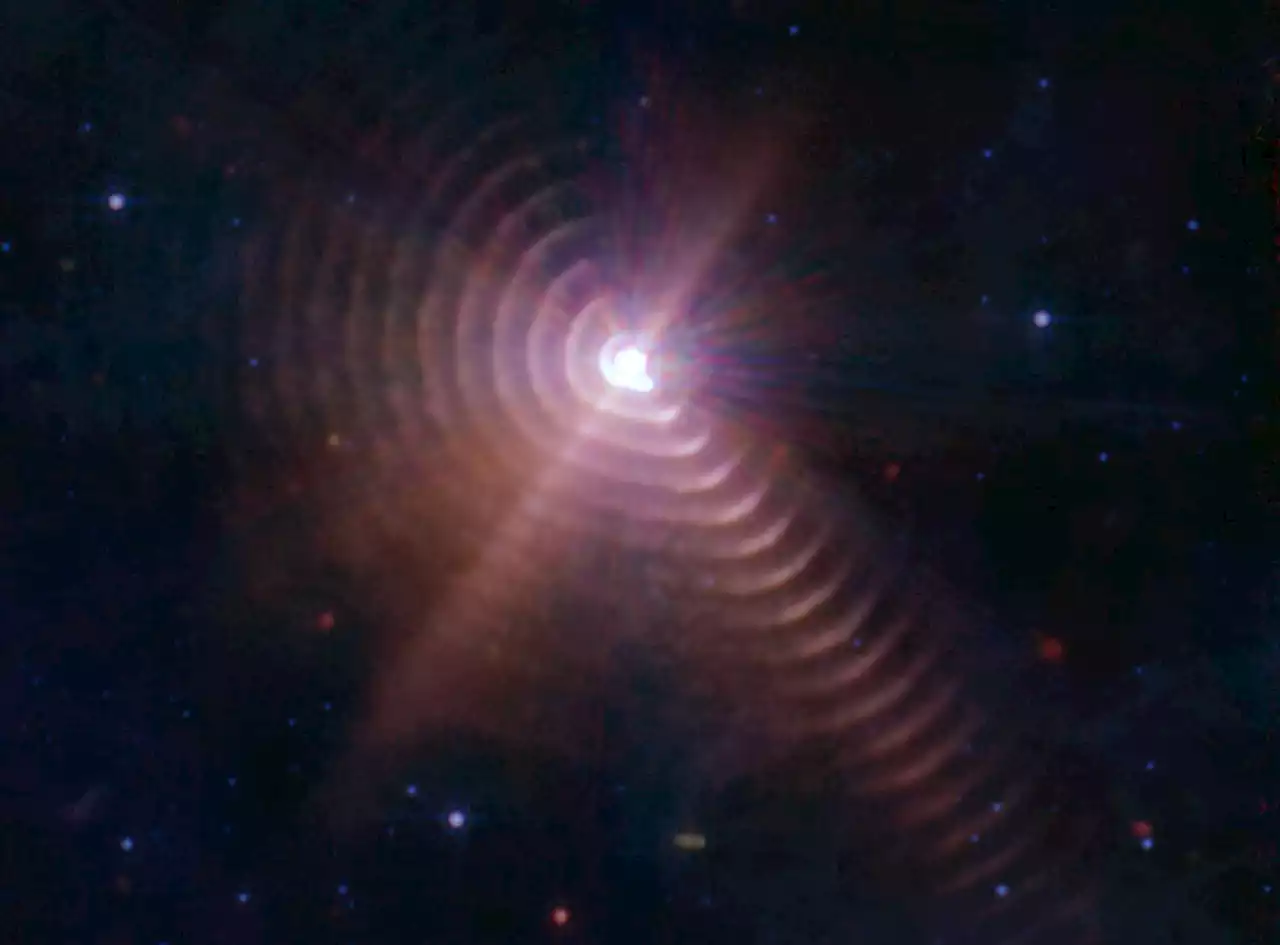The astronomers took 16 years to study the movements of the gas clouds.
The James Webb Space telescope has captured an image of intense light from a star pushing multiple dust plumes into space.
As the two approach, their 1,864 miles per second solar winds smash into each other, arcing a plume of material across space that slowly expands to form rings. As the plumes are only ejected when the stars are near each other, the spacing of the rings is set by their orbital period. This means the dust is made in regular intervals, and the cloud's rings can be counted like tree rings to find the age of the outermost ripple — with 20 visible rings amounting to 160 years of dust.
One of the stars in the duo is a Wolf-Rayet star, a type of rare, slowly-dying star that has lost its outer shell of hydrogen, leaving it to spew out gosts of ionized helium, carbon and nitrogen from its insides. These stars will explode as supernovas one day, but until then the radiation pressure produced by the light unfurls their burst contents, stretching them out like giant phantom jellyfish in the night sky.
The highly predictable timings of the puffs and their expansion over large distances gave the astronomers a unique opportunity to study the underlying physics of the ejections.
United States Latest News, United States Headlines
Similar News:You can also read news stories similar to this one that we have collected from other news sources.
 JWST has spotted bizarre rings of dust around a dying starThe James Webb Space Telescope has captured a bizarre star system with 17 concentric rings of dust spreading away from a dying star like ripples in a pond
JWST has spotted bizarre rings of dust around a dying starThe James Webb Space Telescope has captured a bizarre star system with 17 concentric rings of dust spreading away from a dying star like ripples in a pond
Read more »
 Bizarre rings spied by James Webb Space Telescope are organic dust propelled by starlightTereza is a London-based science and technology journalist, aspiring fiction writer and amateur gymnast. Originally from Prague, the Czech Republic, she spent the first seven years of her career working as a reporter, script-writer and presenter for various TV programmes of the Czech Public Service Television. She later took a career break to pursue further education and added a Master's in Science from the International Space University, France, to her Bachelor's in Journalism and Master's in Cultural Anthropology from Prague's Charles University. She worked as a reporter at the Engineering and Technology magazine, freelanced for a range of publications including Live Science, Space.com, Professional Engineering, Via Satellite and Space News and served as a maternity cover science editor at the European Space Agency.
Bizarre rings spied by James Webb Space Telescope are organic dust propelled by starlightTereza is a London-based science and technology journalist, aspiring fiction writer and amateur gymnast. Originally from Prague, the Czech Republic, she spent the first seven years of her career working as a reporter, script-writer and presenter for various TV programmes of the Czech Public Service Television. She later took a career break to pursue further education and added a Master's in Science from the International Space University, France, to her Bachelor's in Journalism and Master's in Cultural Anthropology from Prague's Charles University. She worked as a reporter at the Engineering and Technology magazine, freelanced for a range of publications including Live Science, Space.com, Professional Engineering, Via Satellite and Space News and served as a maternity cover science editor at the European Space Agency.
Read more »
 JWST has taken a picture of the gaseous ‘skeleton’ of a spiral galaxyNASA’s James Webb Space Telescope has taken a picture of the galaxy IC 5332, peering through the dust that separates its spiral arms to reveal the gas and stars beneath
JWST has taken a picture of the gaseous ‘skeleton’ of a spiral galaxyNASA’s James Webb Space Telescope has taken a picture of the galaxy IC 5332, peering through the dust that separates its spiral arms to reveal the gas and stars beneath
Read more »
 The James Webb Space Telescope spied the earliest born stars yet seenThe stars, found in the first released science image from the James Webb Space Telescope, probably winked into existence about 13 billion years ago.
The James Webb Space Telescope spied the earliest born stars yet seenThe stars, found in the first released science image from the James Webb Space Telescope, probably winked into existence about 13 billion years ago.
Read more »
 A new VR exhibit takes you inside the James Webb Space Telescope's imagesA new VR and IRL art exhibit by Ashley Zelinskie creatively interprets the images NASA released from the James Webb Space Telescope.
A new VR exhibit takes you inside the James Webb Space Telescope's imagesA new VR and IRL art exhibit by Ashley Zelinskie creatively interprets the images NASA released from the James Webb Space Telescope.
Read more »
